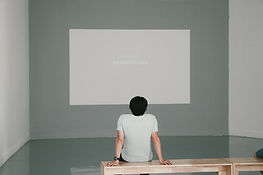
Subconscious Conditioning
Your Mind Runs on Autopilot—Until You Take the Wheel
Most of your daily actions, decisions, emotions, and reactions aren’t conscious—they’re automated. You might feel like you’re in control, but underneath the surface, old programming is running the show. Stored beliefs, past experiences, emotional triggers, and survival instincts shape how you move through the world—without you even realising it.
You’re not thinking through every moment. You’re responding based on scripts that were written years ago—some from childhood, some from trauma, some from repetition. These scripts decide how you handle pressure, how you see yourself, what you believe you deserve, and whether you act or hesitate when it matters most.
This subconscious conditioning isn’t your fault. You didn’t ask for it. Most of it was built without your awareness. But once you see it—once you recognise it for what it is—it becomes your responsibility. Because if you don’t take ownership of what’s running beneath the surface, it will keep sabotaging everything you try to build on top.
You’ll keep repeating the same cycles. You’ll keep making the same excuses. You’ll keep reaching for more while secretly believing you don’t deserve it. And that inner conflict will burn your energy, stall your growth, and leave you wondering why nothing sticks.
Change doesn’t start on the surface. It starts at the source. If you want new results, you need new wiring. And that means digging into the patterns you’ve inherited, absorbed, or built unconsciously—and rewriting them with precision, repetition, and intent. Create a new mental state.
It’s not easy work. But it’s necessary.
You can’t build a new life on a broken foundation. Upgrade the code. Then watch everything shift.

Why Subconscious Patterns Rule Your Life
The subconscious is efficient by design. It records what you repeat—especially when emotion is involved—and automates it to conserve energy. It doesn’t judge. It doesn’t question. It just saves whatever you’ve practised the most, and plays it back as your default behaviour.
That’s how you end up repeating the same habits, attracting the same problems, and hitting the same walls over and over. Not because you’re weak. Not because you’re lazy. But because your subconscious is still running on outdated code. Old beliefs, unresolved emotions, and reactive behaviours that were once useful for survival—but are now killing your progress.
And here’s where most men go wrong. They try to fight old programming with willpower. They think brute force will override years of internal wiring. But the subconscious doesn’t respond to pressure. It responds to repetition, to emotional intensity, and to conscious attention.
If you want to reprogram your mind, you have to feed it new patterns—daily, deliberately, and with emotional charge. That means speaking stronger language. Visualising different outcomes. Acting in alignment with the identity you’re trying to build, not the one you’re trying to escape.
It also means catching yourself in real time. Noticing the old script when it kicks in. Pausing long enough to choose a new response. This isn’t about perfection—it’s about pattern disruption.
You don’t need more motivation. You don’t need to “get tougher.” You need cleaner code.
How Conditioning Is Installed and Reinforced
Subconscious programming doesn’t happen randomly. It gets installed through repetition, environment, trauma, authority figures, and emotionally intense moments. These are the moments that shape the internal code you run your life on—usually without realising it.
The more emotional the experience, the deeper the imprint. A single event, if charged enough, can hardwire a belief or behaviour pattern that sticks for years. Hear the same message enough times—from parents, teachers, culture—and your subconscious accepts it as law. Not because it’s true, but because it’s familiar.
Once installed, those programs get reinforced by daily habits, repeated language, and constant feedback loops. You behave a certain way, get a certain result, feel a certain emotion—and the loop tightens. Over time, that loop becomes identity. You stop questioning it. You just live it.
And here’s the catch: the subconscious doesn’t judge. It doesn’t care if the program is helpful or harmful. It doesn’t sort truth from fiction. It just stores, repeats, and executes whatever you’ve fed it the most. It’s efficient, not intelligent.
That’s why change feels hard. You’re not just trying to shift your actions—you’re fighting against an internal system built to keep things exactly as they are.
If you want a better life, you have to feed your subconscious better commands. That means new habits. Stronger language. Clearer intentions. Repeated actions that match the man you’re trying to become—not the one you’ve defaulted to.
This isn’t about hype or surface-level motivation. It’s about updating the code that drives you when you’re not paying attention.
Because that’s where the real work happens. Not just in what you think—but in what you store.
"The subconscious mind will translate into reality a thought driven by fear just as readily as it will a thought driven by courage." — Napoleon Hill
How to Practise Subconscious Rewiring Daily
Track the Trigger
Any time you react emotionally—whether it's anger, insecurity, or hesitation—pause and ask, “Where did that come from?” Most reactions aren’t about the moment. They’re echoes of old programming. Spotting the trigger is how you trace it back to the source—and start breaking the loop.
Create Mental Rehearsals
Visualise the man you want to become. Not in vague, abstract terms—feel it. See how he stands, speaks, moves, and responds. Rehearse it in your mind like a drill. The more vividly you embody that future identity, the faster your subconscious starts aligning with it.
Use Emotion + Repetition
The subconscious learns best when repetition meets emotion. Speak your key beliefs—your new internal commands—right after intense workouts, meditation, or breathwork. When your state is elevated, your mind is open. That’s when the new code lands.
Change the Environment
Your environment is constantly shaping you—consciously and unconsciously. If your surroundings are chaotic, negative, or filled with distractions, your subconscious absorbs that. Clean it up. Design your space to reflect clarity, focus, and who you want to be. It’s not superficial—it’s foundational.
Sleep Programming
The mind is most open right before and during sleep. Use it. Listen to affirmations or subconscious reprogramming audio while falling asleep. You don’t need to force it—just let the input sink in. Night after night, the repetition does the work.

Common Mistakes That Reinforce Bad Programming
Only Focusing on Surface Habits
Changing habits without addressing identity is like painting over rust. It might look good for a while, but the deeper pattern is still running. Real transformation happens when you stop asking, “What should I do?” and start asking, “Who am I becoming?” Actions follow identity—build from there.
Feeding the Subconscious Garbage
Your subconscious mind is always listening. What you watch, what you hear, what you say—it all goes in. Repetition trains belief, even if the input is trash. If you’re constantly consuming negativity, drama, and low standards, don’t be surprised when your mindset reflects that. Guard the inputs. They shape everything.
Trying to Force Change with Logic
The subconscious doesn’t respond to reason—it responds to repetition and emotion. You can’t out-argue a deeply wired belief. You have to overwhelm it with new experience, vivid visualisation, and felt emotion. Logic explains. Emotion rewires.
Quitting Too Early
Old scripts took years to form. You won’t erase them in a week. Most men quit because they don’t feel immediate change. But reprogramming is a slow burn—it compounds. One rep at a time. Stay with it long enough, and the shift becomes permanent.
Key Takeaways
95% of your life is driven by subconscious conditioning.
You can rewire it through repetition, emotion, and awareness.
Your environment and language are powerful inputs.
Stop reacting. Start reprogramming.
Clean code = clean life.
Program or Be Programmed
If you don’t take control of your subconscious, someone else already has. It doesn’t sit empty. It’s been filled—by parents, teachers, media, trauma, repetition, and culture. It’s been shaped by what you’ve heard, what you’ve felt, and what you’ve believed—especially when you weren’t paying attention.
That silent system beneath your thoughts is what drives most of your choices. Not logic. Not intention. Programming. And if you haven’t taken the time to install better code, you're still running someone else's version of who you are and what you’re capable of.
This is why change doesn’t last for most men. They try to change behaviour without touching belief. They try to push discipline onto an identity that still sees itself as broken, weak, or behind. And that conflict always wins—because the subconscious always wins.
Freedom doesn’t come from a motivational spike or a breakthrough moment. Freedom is built. It’s the result of feeding your subconscious better patterns—again and again—until they overwrite the old ones. It’s repetition with emotion. Precision with language. Clarity with vision. That’s what trains the system underneath the surface.
So train it. Feed it truth. Give it commands that align with who you’re becoming, not who you’ve been. Speak identity. Practice awareness. Use the moments when your state is open—right after workouts, during meditation, before sleep—to install the new code.
You don’t need more hype. You need better programming. And that starts with ownership.
Take the wheel. Rewrite the script. Don’t live your life reacting to a system you never chose.
Build the one that serves you—and watch everything change.
"Until you make the unconscious conscious, it will direct your life and you will call it fate." — Carl Jung



